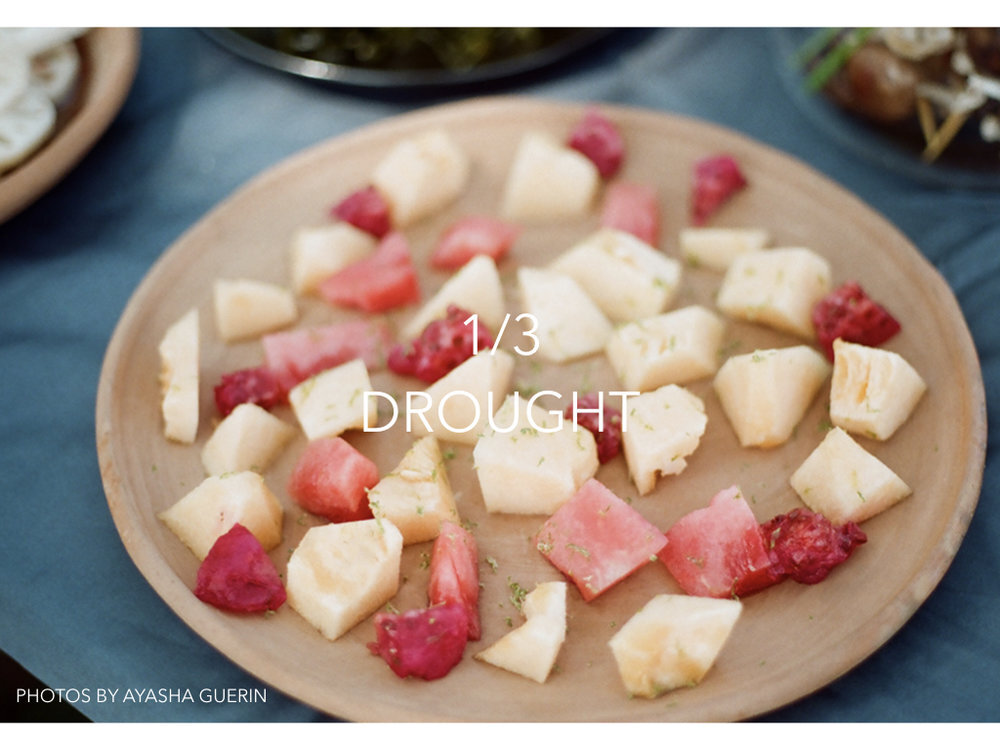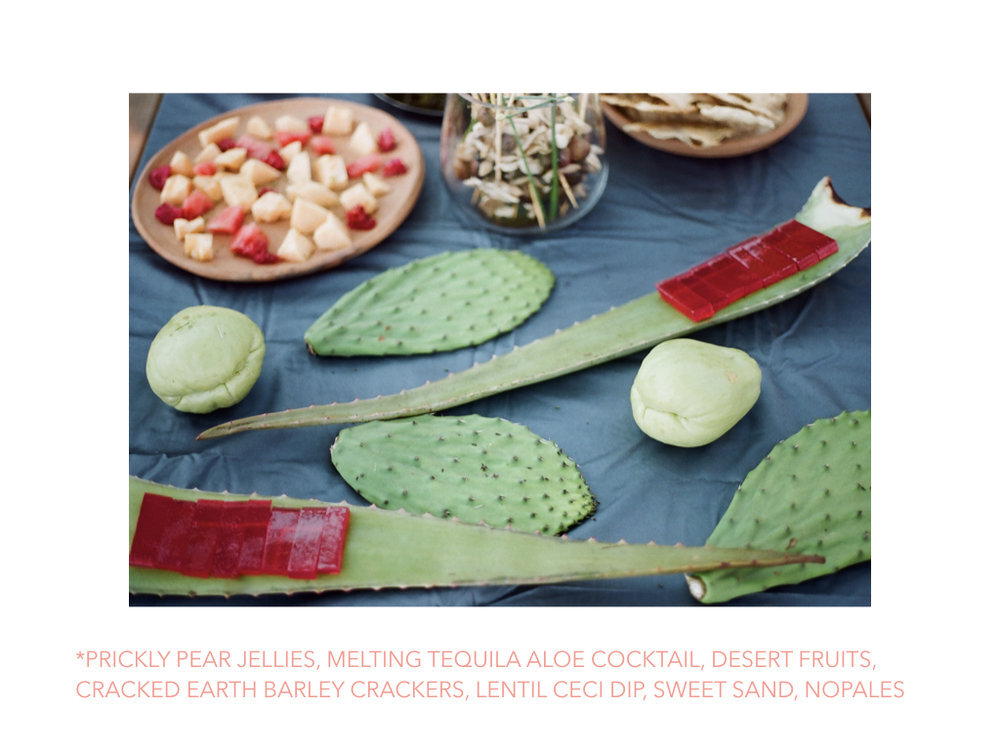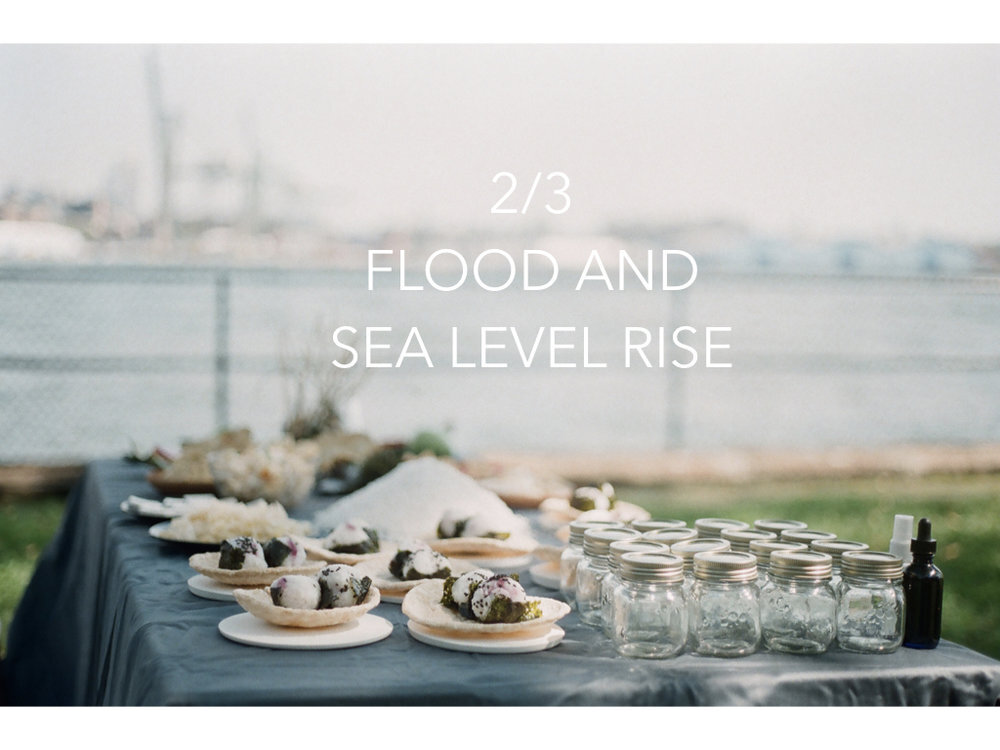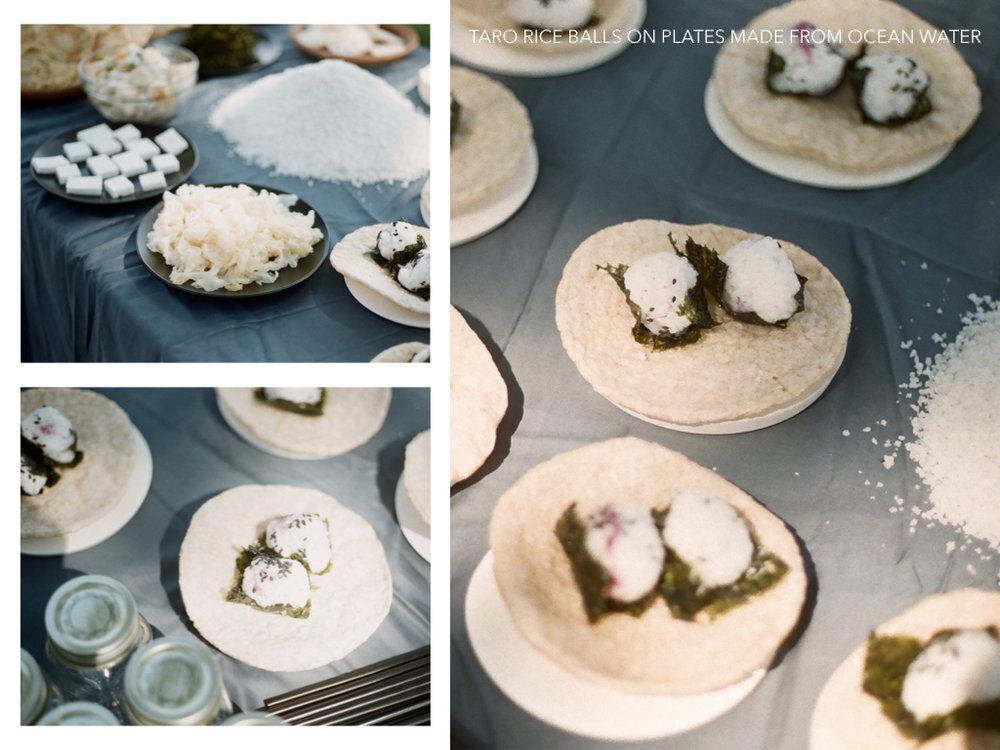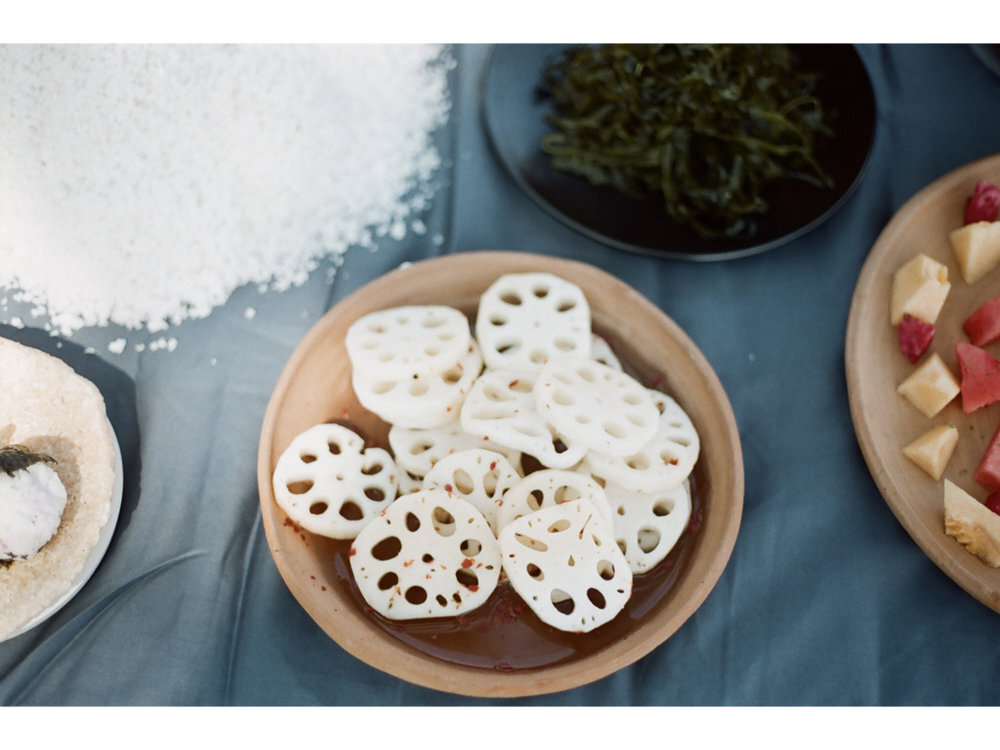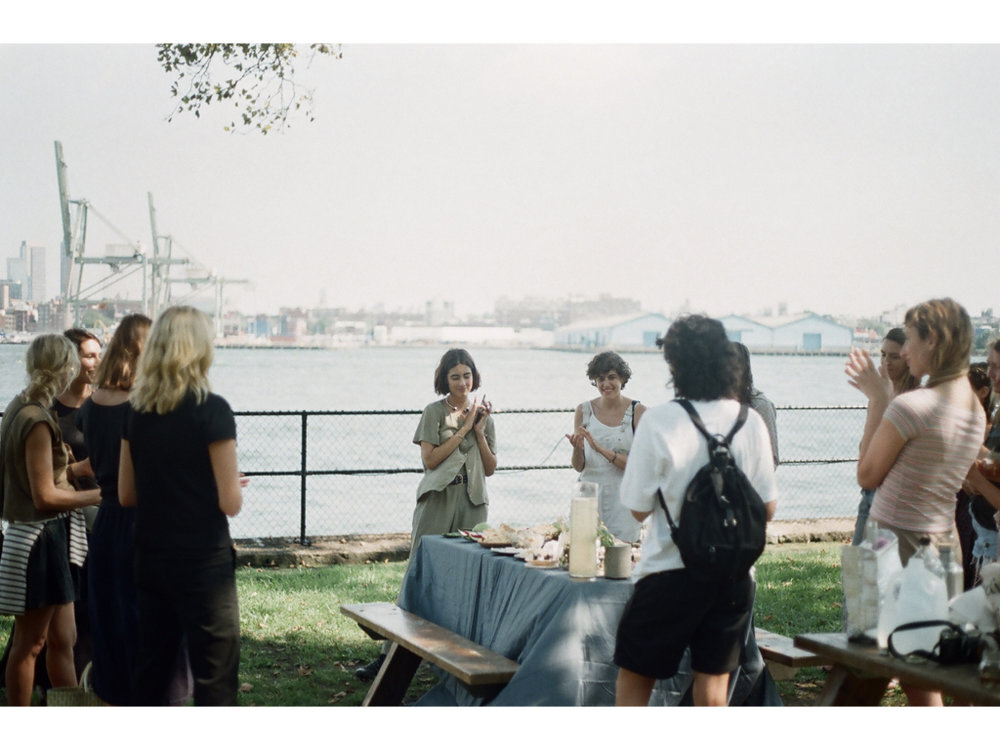Eating Water
Duration: One month/ongoing
Materials: Food, ocean, and rain water
Artist Statement:
Lily Consuela Saporta-Tagiuri: Eating Water is an exploration of how to modify our lifestyles to live in the environments that are emerging as a result of climate change. Using food as a tool to discuss sea-level rise, flood, and drought, the plate becomes an intimate frame through which to serve new recipes and strategies for survival. Made while in residence on Governors Island, this collection includes plates made of ocean and rain water, a pantry of water from around the world, a floating vegetable and herb garden, and 15 recipes using ingredients that are flood-tolerant, drought resistant, or salt-water tolerant. Eating Water is an ongoing project culminating in a series of feasts.
Ayasha Guerin, Photographer: Lily Tagiuri’s Eating Water invited guests to “a tasting and discussion of emerging landscapes and the future of food.” To attend, we would have to catch the ferry from the Brooklyn or Lower Manhattan waterfronts, on a Sunday in late August, to Governors Island. The ferries - which only ran once an hour - departed strictly on time. As a fellow Works on Water resident, I knew the stress of dashing to the pier after a late start or poor train service. It can be an emotional commute to the island, between the pressure of making the ferry on time and the beautiful, moving view of the densely built Metropolis from the open sea. For a city of islanders, our harbor mobility is more limited than many of us water-artists desire.
That Sunday, a crew of fifteen hungry navigators arrived to experience the waterfront-spread. On the Brooklyn-facing side of the island, by the designated grilling fields on Barry Road, the picnic looked out onto the industrial yards of Red Hook. But this would be no barbecue. Guests mingled around a table where plate after plate slowly arrived, a parade of fifteen carefully arranged dishes from the back steps of Nolan Park 5B, the Works on Water residency house. Nearby, families looked on curiously from picnic tables hosting feasts of their own.
LT explained, we would be eating ingredients that can withstand extreme climates, from floods to droughts. Her richly layered food scene resembled a strange landscape of wet and dry patches where fungi, plants, nuts, spilled over a bed of powdery, golden sand, made from blended cookies (vegan, like everything else strewn across a dark blue tarp). Soon, excited human limbs became part of the strange ecology, as we reached, dipped, and stabbed at each delicious dish. Cacti were used as a platter to serve prickly-pear jellies, while other food was plated on ceramics that LT had cast during her residency from rain- and harbor-water. The latter plates hid under large rice cakes that propped seaweed-wrapped taro balls.
As we tasted, LT told us facts about the crops that grow best in flood regions: rice, mushrooms, lotus, and taro. And about those which do particularly well by saltwater: palm, coconut and seaweeds. We discussed the local and foreign landscapes that inspired the meal. We toasted with Mezcal-aloe cocktails as ice melted onto the benches in the sweltering heat. The Mezcal, kept cool in a special block cast to hold its shape, encouraged a conversation about the journey that the agave-spirit, produced on a small farm in Mexico, made to reach New York. After the meal, we took a walk, errantly exploring miles of newly developed park space on the island’s landfill. We pondered the future of the once-water site. At the center of the New York harbor, facing not only development pressures, but the threat of sea level rise and reclamation by powerful storm surges in the coming decades, who will occupy this island?
About the Artist
Lily Consuela Saporta Tagiuri is an industrial designer and creative director based in Brooklyn, NY. Her work addresses emerging climates and conditions of the contemporary metropolis through design interventions. Using video, food, material exploration, products, and installation, she aims to draw attention to underlying social, political, and environmental systems in our modern cities and to explore alternatives.
Ayasha Guerin is an artist and scholar based in Brooklyn, New York. Her work explores themes of urban ecology, community and security in public and private space. She is a PhD candidate in NYU's American Studies department, where her research engages questions about the entanglements of race, nature and value. Her dissertation explores the socio-ecological histories and resiliencies of waterfront communities in Lower Manhattan. She is currently a Fellow of Urban Practice at The Urban Democracy Lab, formerly a Graduate Fellow at NYU's Center for the Humanities, and before, the Andrew W. Mellon Pre-doctoral Fellow at the Museum of the City of New York.



